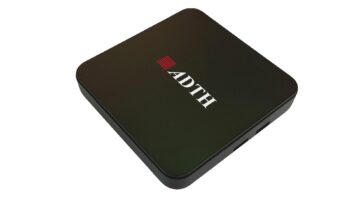As the number of satellite radio subscribers races past 5 million, and as XM Satellite Radio alone continues to grow faster than any product or service in consumer electronics with the exception of DVD, satellite radio executives are now predicting the category will eventually overtake even pay TV.
Sirius Satellite Radio’s CEO Mel Karmazin recently told analysts the U.S. market could reach 200 million given the universe of 109 million homes, as well as 220 million cars on the road. In addition, both Sirius and XM have hinted that satellite radio service will be offered eventually in cellular phones as well as MP3 players.
Early indicators of satellite radio’s success are all positive. Both XM and Sirius claim a low churn of around 1 percent, and a consumer satisfaction rate of about 94 percent. They both cite research showing that owners of satellite radio listen to it 86 percent of their driving time, compared to non-satellite radio subscribers who listen to FM radio 46 percent of their driving time; CD, iPod or other sources 37 percent of the time, and AM radio 12 percent of the time.
Currently XM enjoys a 70 percent subscriber share, expecting 5.5 million subscribers by the end of the year compared to Sirius’s forecasted 2.7 million. Financially, Sirius expects to be cash-flow positive in 2007. XM expects the same by late 2006.
The category has only 4 percent market penetration but rapidly growing consumer recognition with unaided brand awareness at about 36 percent for both Sirius and XM. Unlike radio, subscription-based satellite radio benefits from two revenue streams with advertising on its non-music channels. And it has the capability to expand into other media, some of which it has already broached, including telematics, video, navigation and remote security.
Satellite radio companies have also been surprised by the demographics of the product, which seem to have rapidly cycled through the early adopter 18- to 34-year-old male audience and launched right into mass appeal. While purchasers still skew toward males, XM’s chairman Gary Parsons believes the category will be “gender- and age-neutral in the next few years.”
Analysts expect satellite radio to generate 40 million subscribers by the end of the decade, and the companies themselves expect to reach 8 million by year’s end. But there is still room for uncertainty in the “hockey stick” growth the companies predict.
Analysts say this fall and winter could provide “seminal events” for satellite radio, in the words of Michael Goodman, senior analyst for the Yankee Group, Boston. During this period, Sirius will begin its second year of National Football League coverage and Howard Stern will air exclusively on Sirius. What remains to be seen is if these high-priced properties will pay off in additional subscribers and if it will give Sirius sufficient momentum to narrow XM’s wide lead, now at 2-to-1 over Sirius. Goodman added, “And we don’t want to see a bump and then subscriptions drop back to their levels of a year ago. We want to see them sustain that growth.”
Sirius remains confident that Stern will generate more than the 1 million subscribers necessary to break even on Stern’s $500 million contract over the next five years. Sirius’ chairman Joe Clayton recently told analysts that a third of Stern’s approximately 12 million avid listeners plan to subscribe to satellite radio during 2006, according to research.
In the game of public opinion, Sirius scored big by luring Stern away from terrestrial radio and, shortly after, appointing radio executive Mel Karmazin as CEO. It was a one-two punch that bought it a quick 20-point boost in brand recognition. XM countered with a deal with Major League Baseball that is already paying off, it claims, noting 16 percent of recent subscribers signed up with XM because of its baseball programming, according to a poll.
During one of the recent forums on satellite radio, one security analyst commented on an emerging stereotype for the two companies, with Sirius portrayed as the content leader airing (or about to air) such high-profile personalities as Howard Stern, Martha Stewart, Eminem, Lance Armstrong, Jimmy Buffet and, most recently, “Cousin Brucie” Morrow. XM, accordingly, is portrayed as the technology leader with a significant jump on chip development. Both companies dispute the other’s superiority in either capacity.
XM likes to refer to itself as the “HBO of radio,” reportedly an epithet given the company in a New York Times article because of its focus on live performances and talk sessions with popular artists. Parsons recently stated, “We probably have focused more on the music, quite honestly, than on the big talk-talents and we have a far deeper play list. Sirius is more hit focused.”
Parsons claims XM is more than a year ahead of Sirius in product development. Regarding content, he says that superiority is “subjective.” “What’s the best movie out there or the best movie studio? One pays a lot of money and ends up with a ‘Troy,’ and another spends a little and ends up with ‘Million Dollar Baby.’ It’s the box office that counts, and every quarter, every year, we get the bigger share,” Parsons told analysts at a recent forum.
Sirius thinks that its newest products, soon to be announced and slated to begin shipping this fall, will help close the technology gap, according to senior VP retail operations Bob Law.
One of the newer after-market developments for satellite radio is the push into home and portable products.
XM said it is encouraged by the fact that its recent Connect-And-Play program won a 1 percent market share after only four weeks on the market. XM’s MyFi wearable portable product, introduced late last year, also quickly garnered a top slot in market share.
In terms of new product areas, real-time traffic from XM, called NavTraffic, is beginning to gain ground. Acura, first to launch the product as a standard feature with one year of free service in its new RL sedan, has sold more than 12,000 units since the fall, the company said.
NavTraffic combines with an in-car navigation system to provide real-time traffic incident updates, recycled every few minutes. The incidents appear as icons on the user’s navigation path so the user can reroute around them.
The Cadillac CTS is also now launching the service, and Pioneer has been shipping the first after-market NavTraffic add-on module since April.
Mike Townsen, Pioneer’s marketing VP, said the product is performing very well at retailers who back it with a display and sales training. “Other retailers, who have been a little less aggressive … aren’t doing as well. So we are now addressing training and displays with all of our retailers, so the consumer gets a proper product presentation,” he said.
Alpine is delaying its launch of XM NavTraffic by a couple of months, to September; however, Alpine’s navigation system will be the first to work with more than one real-time traffic system, according to a spokesman. The new NVE-N872A will link to an XM music/data tuner for a target price in the range of $200. It will also work with additional real-time traffic services “as they become available,” the spokesman said. The N872A has a target price of $1,700.
Sirius said it is on track to launch a competing real-time traffic service this fall. Initially it will cover 20 to 25 markets, increasing to 50 by 2007, the company said. Similar to XM’s NavTraffic, users will purchase add-on Sirius traffic modules for approximately $200 that work with certain navigation systems. Sirius said at least one after-market supplier will offer a NavTraffic system at the time of launch.
In terms of future video services, Sirius is targeting the end of this year for a two- or three-channel rear-seat entertainment service. XM has demonstrated the capability to deliver satellite video to the car but does not, as a policy, pre-announce products.













